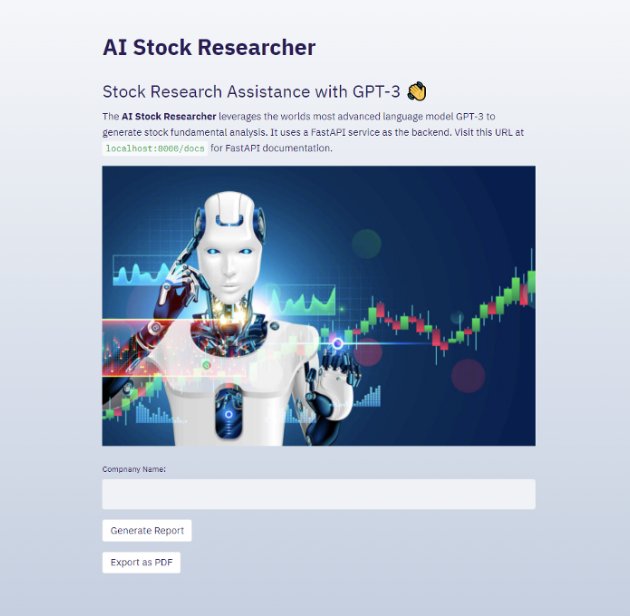The AI and machine (ML) model employed by stock trading platforms and prediction platforms should be evaluated to ensure that the data they offer are reliable, reliable, relevant, and practical. Models that are poorly constructed or overhyped could result in inaccurate forecasts and financial losses. Here are ten of the most useful ways to evaluate the AI/ML model of these platforms.
1. Know the Model's purpose and approach
A clear objective: Determine if the model was created for short-term trades, long-term investments, sentiment analysis or risk management.
Algorithm disclosure: Determine whether the platform is transparent about the algorithms it uses (e.g. neural networks or reinforcement learning).
Customizability: Assess if the model can be adjusted to your specific trading strategy or risk tolerance.
2. Perform model performance measures
Accuracy: Test the accuracy of the model in predicting the future. But, don't just use this measure as it may be inaccurate when applied to financial markets.
Recall and precision. Test whether the model is able to accurately predict price movements and minimizes false-positives.
Risk-adjusted returns: Determine the likelihood that the model's predictions will result in profitable trades after taking into account risk (e.g., Sharpe ratio, Sortino ratio).
3. Check the model with backtesting
Performance historical Test the model using previous data and determine how it will perform in the past market conditions.
Testing on data other than the sample: This is important to avoid overfitting.
Scenario analysis: Assess the model's performance under different market conditions.
4. Be sure to check for any overfitting
Overfitting: Watch for models that perform well with training data but not so well with unseen data.
Regularization Techniques: Check to see if the platform employs techniques such as dropout or L1/L2 regularization in order prevent overfitting.
Cross-validation: Make sure the platform uses cross-validation to assess the model's generalizability.
5. Assess Feature Engineering
Relevant features: Find out whether the model incorporates important features (e.g. price, volume technical indicators, sentiment data, macroeconomic factors).
Select features: Ensure the system only includes important statistically relevant features and does not contain redundant or irrelevant information.
Updates to features that are dynamic Test to determine if over time the model adapts itself to the latest features or changes in the market.
6. Evaluate Model Explainability
Interpretability - Make sure that the model offers the explanations (e.g. values of SHAP and the importance of features) for its predictions.
Black-box models are not explainable: Be wary of platforms that use complex models like deep neural networks.
User-friendly insights: Make sure the platform provides actionable information that are presented in a manner that traders will understand.
7. Examining the Model Adaptability
Changes in the market: Check whether the model is able to adapt to changes in market conditions, for example economic shifts and black swans.
Continuous learning: Determine whether the platform is continuously updating the model to include new information. This can improve performance.
Feedback loops: Ensure that the platform is able to incorporate real-world feedback and user feedback to improve the design.
8. Be sure to look for Bias and Fairness
Data biases: Make sure that the data used in training are accurate and free of biases.
Model bias: Determine if you are able to monitor and minimize biases that exist in the forecasts of the model.
Fairness - Check that the model is not biased towards or against specific sectors or stocks.
9. The computational efficiency of a Program
Speed: Evaluate whether you can predict by using the model in real time.
Scalability Test the platform's capacity to handle large amounts of data and multiple users with no performance degradation.
Resource usage: Determine if the model uses computational resources efficiently.
Review Transparency and Accountability
Model documentation - Ensure that the platform has detailed details on the model including its structure, training processes, and the limitations.
Third-party audits: Check if the model has been independently validated or audited by third parties.
Check if there are mechanisms that can detect mistakes and malfunctions in models.
Bonus Tips
User reviews: Conduct user research and research cases studies to evaluate the effectiveness of a model in real life.
Trial period - Use the free demo or trial to try out the models and their predictions.
Customer Support: Ensure that the platform offers solid technical or model-related support.
These tips will help you assess the AI models and ML models on stock prediction platforms. You will be able to determine if they are transparent and trustworthy. They must also be aligned with your trading goals. Check out the recommended free ai investing app for website advice including stock analysis app, best ai stocks to buy now, stock predictor, best stock analysis website, best copyright prediction site, best ai trading platform, ai for copyright trading, ai day trading, ai trader, ai trade and more.

Top 10 Tips To Evaluate The Scalability Of Ai Platform For Analyzing And Predicting Trading Stocks
The ability to scale AI-driven trading and stock prediction platforms is essential to ensure they can handle increasing data volumes, user demands, and market complexity. These are the top 10 ways to assess scalability:
1. Evaluate Data Handling Capacity
Tip: Make sure the platform you're considering is able to handle and analyze large data sets.
Reason: Scalable platforms are required to handle increasing data volumes without performance degradation.
2. Test the capabilities of Real-Time Processing
Check out how well your platform can handle live streams of data in real-time including live stock quotes or breaking news.
The reason: Trading decisions are made in real-time and delays could cause traders to miss out on opportunities.
3. Cloud Infrastructure and Elasticity
Tip: Determine whether the platform is cloud-based infrastructure (e.g., AWS, Google Cloud, Azure) and can scale resources dynamically.
Cloud platforms are able to allow flexibility. The system can be scaled up or reverse according to the demand.
4. Algorithm Efficiency
Tip: Check the computational effectiveness and the accuracy of AI models for predictions.
Reason: Complex algorithms can be resource-intensive, therefore optimizing them is essential for scalability.
5. Learn about Parallel Processing and Distributed Computer Systems.
Tips: Make sure that the platform supports distributed computing or parallel processing frameworks (e.g., Apache Spark, Hadoop).
What are they: These technologies facilitate faster data processing and analysis over multiple nodes.
Examine API Integration. API Integration.
Tips: Make sure that the platform is compatible with other APIs, such as market data providers or brokerage APIs.
Why? Seamless integration allows the platform to be adapted to new trading environments and data sources.
7. Analyze User Load Handling
Try simulating traffic volumes that are high to determine the performance of your platform.
Why should scalable platforms provide the same performance regardless of the number of users.
8. Analyze the model retraining and the model's adaptability
Tip: Evaluate how frequently and efficiently AI models are being trained with new data.
Why? Models have to constantly adjust to changing markets to ensure that they remain precise.
9. Check Fault Tolerance (Fault Tolerance) and Redundancy
Tips: Make sure the platform has failover mechanism and redundancy to handle hardware or software issues.
Why? Downtime in trading can be costly, so the ability to tolerate faults is essential to ensure the scalability.
10. Monitor Cost Efficiency
Review the costs involved in scaling up the platform. This includes cloud resources, data storage as well as computational power.
It's crucial to maintain a healthy equilibrium between the performance costs and expenses.
Bonus Tip: Future-proofing
Make sure the platform is built to take advantage of new technologies (e.g., quantum computing, advanced NLP) and adapt to regulatory changes.
If you focus on these elements, you can effectively assess the scale of AI stock prediction and trading platforms, making sure they're robust, effective and ready for future growth. Check out the best trading ai bot for site info including ai for stock trading, ai trading platform, ai investment platform, best stocks to buy now, best ai copyright, chart ai for trading, ai trade, ai trading software, best ai copyright trading bot, trading ai and more.
